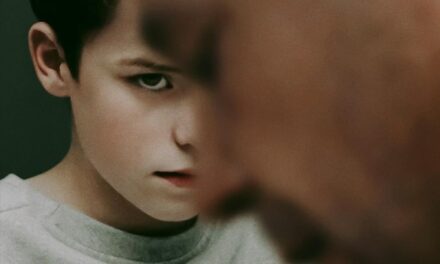In 1969 Alan Lovell wrote a seminar paper on ‘British Cinema: The Unknown Cinema’, ‘unknown’ because of the paucity of scholarly work on British Cinema at the time – a situation which, in 1997, Lovell noted was no longer the case. Until relatively recently the same could have been said of British Television, given the paucity of academic study of television. Yet, while Television Studies has since grown as a discipline to rival Film Studies, the study of television history still has some way to go to catch up with that of film history. There are good reasons for this: an absence of recorded material, right up to the 1970s in some cases, and problems of archival access for television scholars, which has resulted in the emergence of a canon of often mentioned ‘classic’ television programmes: Z Cars, Cathy Come Home, Fawlty Towers, Brideshead Revisited, Boys from the Blackstuff, Edge of Darkness, The Singing Detective, to name just a few. But what of all those programmes that are unknown, either because they have not been available for viewing or because they no longer exist?
In March 2009 I was invited to contribute to a one-day symposium at Warwick University on ‘Making and Remaking Television Classics’ (see the May 2009 TV Reflection by Rachel Moseley and Karen Lury). I decided to play devil’s advocate by proposing three television ‘classics’ which I was pretty sure most people attending would not have heard of, let alone seen.
I’ve never been very exercised by the concept of a ‘TV classic’. In British Television Drama: A History(BFI, 2003) I used the term ‘classic’ only when referring to TV adaptations of ‘classic novels’ and to the debate about the ‘classic realist text’. When I selected six dramas as ‘case studies’ for the book ‘classic’ was not a term I used to describe any of them, although one of them, Edge of Darkness, is now the subject of a BFI TV Classic, written by John Caughie. Looking over the list of BFI TV Classics published so far I was struck by two things: firstly that all the books are about series or serials, rather than individual programmes, many comprising multiple episodes and, in the case of Doctor Who and Star Trek, spanning several decades – suggesting that quantity is no barrier to being a ‘classic’ and that popularity and longevity are important in establishing a programme’s ‘classic status’. Secondly, I was struck by the fact that more than half of these ‘classic’ series and serials were made after 1990, with only five of the fifteen published so far dating from before 1985. Given that there’s 50 years of British television history before 1990, this suggests that a traditional criterion of ‘classic’ status – age – is not one of the main criteria in the selection of programmes for the BFI series.
There are practical reasons why a lot of pre-1970s British television may not qualify for ‘classic’ status, because much of it was broadcast live and not recorded, or, where they were recorded, those recordings were subsequently wiped or junked, right up to the late 1970s in some cases. Yet there are many programmes from the 1950s-70s that are well known and often cited as ‘canonic’ (a synonym perhaps for ‘classic’) such as Nineteen Eighty-Four, Z Cars, Steptoe and Son, Cathy Come Home, Talking to a Stranger, The Forsyte Saga, Days of Hope, The Naked Civil Servant, I Claudius, Abigail’s Party and Pennies from Heaven – none of which have yet been lionised as a BFI TV Classic. In fact, at the time of writing, there’s a rather large lacuna in the BFI TV Classics list between 1969 and 1985, with nothing dating from before 1963. So, as part of the process of recovering a ‘lost history’ of British television, I want to propose three ‘classic’ television dramas from the 1950s and early 1960s.
In British Television Drama: A History I suggested that because so few programmes survive from the early 1950s Nineteen Eighty-Four virtually chose itself as a seminal drama from the period. I’ve since discovered, however, that six Sunday Night Theatre plays broadcast before Nineteen Eighty-Four still exist in their entirety. The ephemerality of British television in its first four decades is evident from the fact that out of 255 Sunday Night Theatre plays broadcast in the first five years of the series (1950-54) only seven survive. While the earliest surviving play, It Is Midnight, Dr Schweitzer (tx.22 and 26 February 1953) is of interest for a number of reasons, not least because it is the earliest, my nomination for a ‘TV classic’ is Anastasia (tx.12 and 16 July 1953 – nearly all Sunday Night Theatre plays were repeated – and some telerecorded – on Thursday evenings, when the cast had to reassemble in the studio for another live broadcast).
I first became aware of Anastasia when Jason Jacobs mentioned it in his book on early British TV drama, The Intimate Screen (Oxford, 2000: 13). Jacob’s research led him to conclude that the telerecording of Anastasia was destroyed when 20th Century Fox acquired the rights to the play, prior to making a film of it in 1956. Yet my own research revealed that a telerecording of the Thursday night repeat did exist (but not the original Sunday night broadcast) in the BBC Film Library.
The survival of a telerecording of Anastasia means that it meets what John Ellis has described as ‘the first precondition for canonical treatment: it still exists’ (Ellis, 2007: 20). But the significance of Anastasia, and its claim to ‘classic’ status, resides beyond the fact that it has survived against the odds. Based on a stage play by Marcelle Maurette, the BBC’s production of Anastasia features Peter Cushing in an early role as one of a group of Russians exiles who are plotting to make money out of the rumour that the youngest daughter of the Tsar was not killed when the Romanov royal family were murdered by the Bolsheviks in 1918. They find a woman who bears a resemblance to Anastasia who they train to act like her, but the woman shows a particular aptitude for playing the role and they begin to realise she might be the real Anastasia. The unravelling of this plot, over the two hours of the play, is given verisimilitude by the performances, culminating in a powerful scene between Anastasia and her grandmother, which was noted as a highlight in reviews of the play. The BBC Audience Research Report records how audiences found the play ‘gripping and intensely dramatic’ and the Reaction Index of 82 was well above average for Sunday Night Theatre plays. The play was voted Best Play of the Year in the Daily Mail National Television Awards for 1953-4 and Peter Cushing was voted Outstanding Actor of the Year.
By several criteria I believe Anastasia qualifies as a ‘TV classic’:
- as a rare example of an early Sunday Night Theatre play, pre-dating the more well known Nineteen Eighty-Four;
- as an award-winning drama which was praised by critics and audiences alike;
- as a play on a real-life subject – there was still speculation in the 1950s that Anastasia had survived the murder of her family – which clearly engaged viewers and was rated very highly by the BBC viewing panel (more highly, I believe, than Nineteen Eighty-Four);
- and as a live studio drama using minimal resources to great effect, where the script, performances and production combine to produce a classic example of a certain kind of prestigious BBC television drama – the single play – at a time when the BBC still had a television monopoly.
My second nomination for a TV classic comes from the end of the 1950s, when a number of people within the BBC formed what became known as the Langham Group, to experiment with the form of television drama, which was still largely studio-bound and ‘theatrical’ at the time. The Langham Group was short-lived and just three dramas were produced, only the first of which survives: an adaptation of the Turgenev novella, The Torrents of Spring (tx.21 May 1959). John Hill has recently written about this in a chapter on the Langham Group in Mulvey and Sexton’s Experimental British Television (MUP, 2007), so perhaps this play is now better known than it was when I mentioned it in British Television Drama: A History in 2003. It may also be that the second Langham Group production, Mario (tx.15 December 1959), adapted from Thomas Mann’s ‘Mario and the Magician’, may have greater claims to being a ‘classic’ for its formal inventiveness – the script of Mario in the BBC Written Archives Centre describes a panoply of stylistic innovations, including what may be the first montage of still images in British television drama – but the fact that no recording of Mario exists means it does not meet Ellis’s ‘first precondition for canonical treatment’.
The Torrents of Spring is itself remarkably innovative for a live studio drama from the late 1950s. It utilised a single camera, long-take technique – one camera used for each scene – which resulted in very mobile camerawork and a complicated choreography of the actors. It also contains a series of short one-shot scenes, forming a live-action montage, dissolving from one shot to another to indicate an elliptical passage of time during the course of the relationship between a young couple. In addition, the play has a complex soundtrack – the contribution of Charles Parker, the radio sound pioneer. Directed by Anthony Pelissier, The Torrents of Spring is a rare example of avant gardetelevision from the late 1950s. Although the Langham Group was derided by Troy Kennedy Martin in his influential ‘Nats go home’ article a few years later, many of the non-naturalistic elements which Kennedy Martin and others subsequently championed are, as John Hill points out, evident in the work of the group, of which The Torrents of Spring is the only surviving example.
My third ‘unknown TV classic’ was produced a year later and transmitted on the BBC in February 1961. Three Ring Circus was written by Jack Gerson and directed by James MacTaggart at the BBC’s studios in Glasgow. It was telerecorded but after its initial transmission remained unseen, as far as I’m aware, for over 40 years. In the course of interviewing Troy Kennedy Martin, John McGrath and Roger Smith, who all worked in the BBC Script Department at the beginning of the 1960s, I was repeatedly told how influential Three Ring Circus had been on the development of an experimental tradition in BBC television drama at the time.
Unlike Anastasia and The Torrents of Spring, Three Ring Circus was not transmitted live but was pre-recorded – which may be why it has survived. It shows some influence from Langham Group productions – in terms of long takes, mobile camerawork, unusual camera framings and an experimental soundtrack (using electronic sound effects provided by the BBC Radiophonic Workshop) – but its claim to ‘classic’ status comes largely from MacTaggart’s innovative use of a highly condensed montage sequence, comprising 75 still images in less than two minutes of screen time, which was used to advance the narrative in a highly elliptical, non-naturalistic manner. The technique owes something both to the modernism of Soviet montage and also, perhaps, to the shower sequence in Psycho, released in the same year Three Ring Circus was produced.
The significance of Three Ring Circus resides not just in its formal innovations but in the fact that it brought James MacTaggart to the attention of the BBC Drama Department in London. Following its transmission MacTaggart was invited to work on an experimental drama series which Troy Kennedy Martin was developing, called Storyboard, and he stayed on to produce several more series, all forerunners of The Wednesday Play, on which MacTaggart was the first producer. He went on to write and direct other innovative productions before his early death in 1974, following which the MacTaggart Memorial Lecture was founded at the 1976 Edinburgh Film Festival (now a highlight of the annual Edinburgh International Television Festival). Despite his centrality to the history of British television drama and his key role in helping to establish The Wednesday Play, MacTaggart’s Three Ring Circus – which arguably started it all – is still virtually unknown.
For its Spring 2010 issue, Critical Studies in Television is planning a special issue on ‘Invisible Television’. As ‘unknown TV classics’ Anastasia, The Torrents of Spring and Three Ring Circus seem like prime examples of ‘invisible television’. What constitutes the ‘canon’ in television history at the moment may only be the tip of an iceberg – there may well be many more ‘unknown classics’ hidden from view.
Lez Cooke is Research Fellow in Television Drama at Manchester Metropolitan University. He is the author of British Television Drama: A History (BFI, 2003) and Troy Kennedy Martin (MUP, 2007) and is Book Review Editor for Critical Studies in Television. He is currently developing book projects on regional British television drama, the film and television work of John McGrath, and editing a collection of interviews with TV drama writers, producers and directors. An article on Three Ring Circus will appear in a forthcoming issue of Screen.





